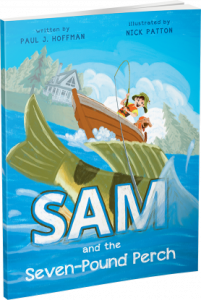Published: April 3, 2018
Picture books offer a great opportunity to create timeless and fun stories for children.
Here are six elements that are sometimes overlooked, but are important if you want to successfully self-publish a children’s book.

-
Story and Language
Is the story simple enough to be told in 500 – 1000 words? Is it strong enough to capture a child’s imagination? Even for children, stories should be logical, though that doesn’t rule out introducing an element of nonsense (think Dr. Seuss). And though children’s books offer a great opportunity word play, the language should be simple enough for young readers to understand.
-
Structure
Is your story told in prose or in rhyme? If it’s told in prose, make sure it makes sense and that point A flows to point B. If it’s a rhyming book, the same holds true, but the rhythm must work. Test by reading it out loud, or better yet, have someone not familiar with it read it to make sure the cadence works and that it’s easy to follow the rhythm. Remove complicated phrasing and extra syllables – keep the beat.
-
Illustrations
For picture books, the illustrations set the tone. Some writers are both, but many need to team up with an artist. Look for illustrators online, at art colleges, or through the Society of Children’s Book Writers and Illustrators. Consider how the illustrations can complement and enhance the text, as well as the tone, of the story. And you might want to browse this wonderful collection of podcasts by illustrator Nick Patton (Sam and the Seven-Pound Perch).
-
Storyboard
A storyboard will help you figure out how the words and illustrations will interact in your book, and how many illustrations you will need. Determine what piece of text will go on each page, and what illustration will accompany it. Work with your illustrator to decide if the text will go over illustrations (in which case they need to leave some space for it) or if it will be on one side, with an illustration on the other. We recommend 48 pages total for POD (print-on-demand) picture books in order to have spine text. With that said, they can be shorter or longer.
Click to download a simple Storyboard.
-
Themes
Is your story intended to inspire? Amuse? Inform? Some books tell an amusing or touching story, but if your book has a message, present it without preaching or judgment. Consider what you are trying to say, and how to say it in a clear, simple voice. Match the illustrations to the story tone and theme.
-
Target Audience
Generally, picture books are aimed at children from one to preschool years, but they can reach higher grades, too. And I always remember that slightly older kids might be able to read them aloud to younger ones, as my kids did when they were growing up.
Once your book is written and your illustrations are complete, you’ll need a designer to put it all together. A designer lays out the text with an appropriate font, creates front and back covers, and makes the files from which you will print your book.
For more information visit our page on publishing children’s books.